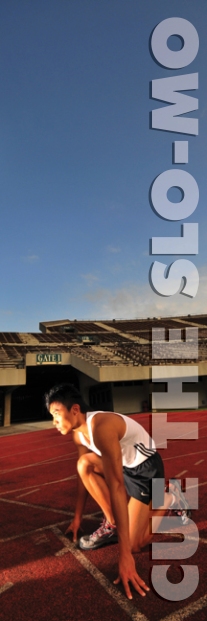Event Overload
Here’s something that’s been honking me off lately. Actually, it’s been going on for several years. As a nation, we are having far too many events.
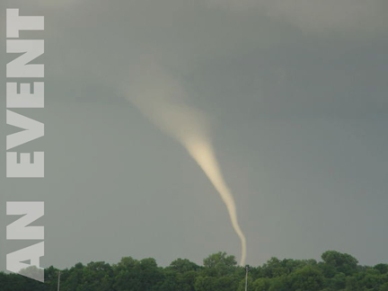 When is a wedding not a wedding? When it’s a wedding event.
When is a wedding not a wedding? When it’s a wedding event.
When is rain not rain? When it’s a rain event.
When is a sale not a sale? When it’s a sale event.
When is a tornado not a tornado? When it’s a tornadic event.
What’s going on here? Why all these events? Isn’t the word “event” implicit. Certainly it is in the case of a wedding. What wedding – even the most modest affair at the county clerk’s office – isn’t something of an event, to say nothing of a tornado?
This annoying linguistic trend first came to my notice several years back when Nashville had the big flood. The thing that caused the flooding was rain. Lots of it. Twenty-four hours of it, copious and non-stop. It was rain. But during the flood and it’s aftermath local TV talking heads kept referring to it as a rain event. Even the mayor of our fair city – normally a well-spoken sort of chap – got into this unfortunate act.
It reminds me of all the other times I hear extra words used when they aren’t called for – like Improvised Explosive Device for booby trap. Why use two short words when you can use three bigger ones? Or six? Bureaucrats have been specializing in this for decades, and now everyone else seems to be getting into the act.
(And let’s not even get started on how insult is added to injury when these over-worded descriptions morph into acronyms. Booby trap becomes Improvised Explosive Device which becomes IED. That’s a subject for another Marketini.)
And what’s behind this layering on of excess verbiage? My guess is a lack of self-esteem which leads the speaker or writer to feel what he or she is saying lacks appropriate gravitas. And the apparent solution for this “problem” is to add extra words. Somehow rain event sounds more important than rain. Certainly tornadic event sounds more important – not to mention more technical – that a mere tornado.
But all extra words do is clutter things up, obscure genuine meaning, and annoy people like me who appreciate clean prose and correct usage.
So, what to do about this nonsense? Sit back, relax and enjoy it. The rock is rolling down the hill. The situation will likely get worse not better, and this Marketini is my first and last outburst on the subject. From here on out, I’m event-neutral.
So what does any of this have to do with marketing?
I’m glad you asked.
This has to do with plain-speaking and clear communication.
Here’s the deal. You need to be telling the straight truth about your product or service. That’s not to say it’s necessary to be utterly literal in the way you say it. I’m not against simile and metaphor, or flights of fancy, at all if done for proper effect. In fact those techniques are often rather fun.
But the marketing message has to come down to earth – and reality – at some point, and it had better be at a point of basic truth, not something embellished and fake.
If you’re talking about a sale, use all the fancy language you want as long as, at the end of the day, it’s a sale you are talking about and not something artificially inflated like a sale event. Some of your customers will notice that your sale event is nothing more than a sale. Which can lead them to being skeptical of everything else you say. Not a good situation.
Is it time for a cocktail?
When is it not?
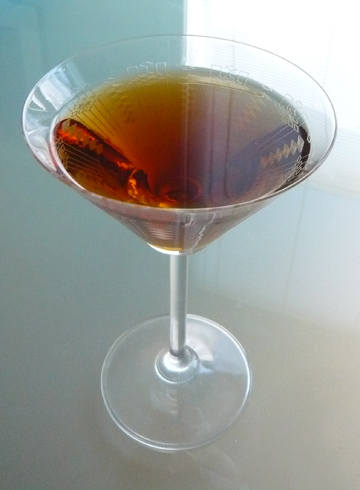 And, these days it’s time we looked to the transition from summer to fall for inspiration. The Man o’ War, our cocktail this time, is an ideal transitional drink. Based on bourbon, but with a hint of citrus, its rich brown color and sweet-tart flavor bridge the gap from hot weather to chilly perfectly.
And, these days it’s time we looked to the transition from summer to fall for inspiration. The Man o’ War, our cocktail this time, is an ideal transitional drink. Based on bourbon, but with a hint of citrus, its rich brown color and sweet-tart flavor bridge the gap from hot weather to chilly perfectly.
If you want to make cocktail hour a true event, try a couple of these yummy concoctions. You won’t be disappointed.
Man o’ War
- 2 parts bourbon whiskey
- 1 part triple sec
- 1 part sweet vermouth
- 2 parts lime juice
A Man o’ War is stronger than some, so be sure to sip, not guzzle.
Weather Weirdness
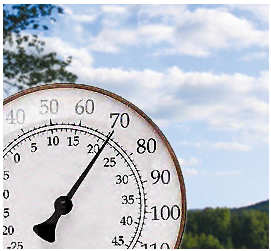 Here it is folks: this weather is freaking me out. It’s actually been pleasant. Here in Nashvegas. In July. And August.
Here it is folks: this weather is freaking me out. It’s actually been pleasant. Here in Nashvegas. In July. And August.
Highs in the 80s, lows in the 60s, plenty of rain so everything’s green, and lots of sunshine too. And – this is a biggie! – reasonable humidity. The forecast calls for more of the same in the week ahead.
So what?
Here’s what: Nashville isn’t living up to its brand promise – and I’m beginning to get wigged out.
Part of the Nashville brand involves absolutely miserable weather from late June straight through to Labor Day – and often beyond. Oppressive heat, grayish skies (even on “clear” days) and body-crushing, soul-sucking humidity. It’s a part of what Nashville “is.”
So now that we have gone weeks without a single instance of really ugly weather, I’m getting a little concerned. Does this mean we’ll have a really cold winter? Will we pay for this with steamy heat all the way into October?
And I’m not alone. Among the exclamations about the pretty weather, I’m beginning to hear comments like: “What’s wrong?” and “This is getting creepy.”
It reminds me of the news from Moscow several years ago when it failed to snow before December. It was cold, but it didn’t snow. People were jumping out of windows – literally. They couldn’t handle it.
Is this the end of the world?
Well, probably not. And the weather may well revert to its godawful August norm. But for now, things are different from what I expect and even though it’s delightful, it’s danged unsettling.
So what does pleasant weather have to do with marketing?
It all goes back to that brand promise thing, and the danger of not meeting it. Most brands promise good things of course. Nashville’s does too. Like our relatively mild winters and our music culture. But severe deviation from the expected in a brand – think of what would hit the fan if all Nashville’s musicians suddenly turned into hacks – causes cognitive distress. Our recent run of weather – this time, something pleasant when I was expecting unpleasant – is also causing cognitive distress.
When that occurs in the commercial world, people will stop – or at least reconsider – buying. And these days, who can afford that? So, deliver on your brand promise. Or suffer the consequences with confused and annoyed – possibly freaked out – customers.
Time for a cocktail?
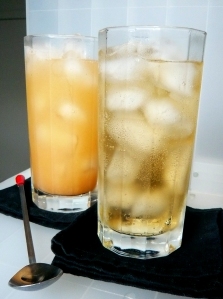 You bet! Or in this case time for a highball. Unlike cocktails which are usually served straight up in a cocktail glass (often called a martini glass), a highball is served in a tall glass with lots of ice. It serves the same function as a cocktail, but it’s a somewhat different thing.
You bet! Or in this case time for a highball. Unlike cocktails which are usually served straight up in a cocktail glass (often called a martini glass), a highball is served in a tall glass with lots of ice. It serves the same function as a cocktail, but it’s a somewhat different thing.
Highballs consist of a base spirit with some sort of mixer added – frequently, but not necessarily club soda or another carbonated drink. And assuming the weather does revert to the August norm, they are very refreshing on a hot day.
So here are a couple of my favorites, variations on the standard – and let’s face it, rather tired – gin and tonic.
Gin and Ginger
- Pour an ounce or two of gin in a tall straight sided glass. (Improvise if you don’t have such a thing. If anything that holds liquid will hold a cocktail, the same is true for a highball.)
- Fill with ice.
- Fill with Vernor’s ginger ale. (It doesn’t actually have to be Vernor’s but that’s a good, readily available baseline choice. The richer and more flavorful the ginger ale the better.)
- Stir once with a long spoon.
- Sip. Smooth and refreshing.
Gin and Grapefruit
- Repeat the first two steps above.
- Fill the glass ¾ full with ruby red grapefruit juice. (The not from concentrate kind, or better yet, squeeze it yourself.)
- Top with club soda.
- Stir once with a long spoon.
- Sip. Tart and tasty!
- A nice, much sweeter, variation on the recipe above is to use Izze grapefruit soda instead of the grapfruit juice.
Hot, sticky weather may or may not be on the way, but with these two concoctions, refreshment most certainly is.
Finding eveything. Or not.
More about the indignities of retail commerce …
Do you get asked this when you are next up in the checkout line: Did you find everything you were looking for? I do. And it makes me a little crazy.
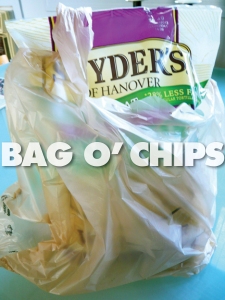 The other day I had a semi-major shock in the checkout line at the grocery store. As my turn arrived and the checker was beginning to scan my purchases, she asked what has become the question du jour: Did you find everything you were looking for? In truth, I hadn’t. I was looking for a particular kind of chips and they weren’t on the shelf where they usually are. So, I said, “No I didn’t.”
The other day I had a semi-major shock in the checkout line at the grocery store. As my turn arrived and the checker was beginning to scan my purchases, she asked what has become the question du jour: Did you find everything you were looking for? In truth, I hadn’t. I was looking for a particular kind of chips and they weren’t on the shelf where they usually are. So, I said, “No I didn’t.”
She replied that she was sorry about that and – here comes the shock – she actually asked what it was I couldn’t find. We had a brief discussion about the chips, she said she wasn’t sure why they didn’t have any, but could check with management about it, and I – still reeling from this unexpected attention – decided to let the matter drop. What’s going to happen if she does check with management. I and the rest of the line are going to stand there patiently while an assistant manager rummages around in the stock room to find that elusive bag of chips? I doubt it. Further, I assume that if such a bag of chips existed within the building, it would be on the shelf where someone could buy it, so why even look.
My points about this question are these: Nobody much really cares about your answer. And what happens if they do?
I get asked this question at checkout lines all over town – it’s not just groceries – and it’s gotten to the point when I answer the question with a yes, even if I couldn’t find anything I was actually looking for, because the response is generally so lame. Usually the checker says something like, “I’m sorry about that,” and continues with what he or she was doing. Once I was checking out at Office Depot, and I hadn’t found everything I was looking for. When the question came, I replied that I hadn’t found everything, and I was promptly asked if I wanted to buy some postage stamps. Apparently they sell postage stamps at Office Depot and that’s more important than selling other stuff a customer might actually want.
And then there’s the issue of what happens if the store actually gives a rip about whether you’ve found everything. A customer in the checkout line is ready to conclude the transaction and get going. Even if this person is willing to wait patiently for the situation to be dealt with, it’s a sure bet the next six people in line are not. Talk about honking off a line full of customers! To ask someone who is checking out is to ask too late. There should be more concern about finding what’s needed before the customer gets into the checkout line.
This is an example of fake concern that’s supposed to make you feel good about shopping where you are shopping, but actually has the opposite effect. It sort of reminds me of all the oozing fake friendliness when restaurant waiters introduce themselves at the table as if they really wanted to be friends with you.
What’s the marketing connection?
This is about honesty. Don’t say something to a customer you don’t really mean. The question, “Did you find everything you were looking for,” uttered in the checkout line pretends to care. But when practical realities are considered, it becomes obvious that the question is hollow. All the store cares about is making you feel like they care. If they really cared they’d have floaters in the checkout area asking the question before customers commit to a checkout line.
So, does the retailer asking the question really care. No. They are fibbing. And what happens when you tell a fib? Oh heck, let’s call it a lie. You get found out. In this case, pretty easily – witness the young woman at Office Depot who offered to sell me postage stamps rather than helping me find something I needed. Does this make me feel more or less inclined to revisit the lovely, caring folks at Office Depot? I’ll let you figure that one out.
Cocktail Time
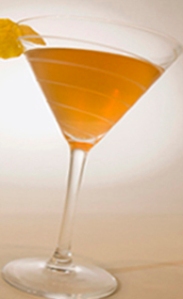 Here’s another all-time classic, the Bronx. Dating from the early 20th century, and like the Manhattan, named for one of New York’s boroughs.
Here’s another all-time classic, the Bronx. Dating from the early 20th century, and like the Manhattan, named for one of New York’s boroughs.
As for the name, there are several stories about how it landed on this cocktail, and who knows which, if any, is correct, so I’ll skip those and go right to the point. The taste is sort of like the name – bracing, not sweet, a little bit tough, rather strong, and very adult. A nice shift from all the sweet drinks that hide how strong they are. You’ll know you’re having a serious belt here, and you’ll sip rather than gulp.
Unlike the Manhattan which is best in cold weather, the Bronx is good year-round. So shake up a few and toast the big city. No Bronx cheers for this little delight!
Bronx
- 2 ounces gin
- ½ ounce sweet vermouth
- ½ ounce dry vermouth
- 1 ounce orange juice – fresh if possible.
Shake over ice and serve straight up. Garnish with an orange twist if you like.
Receipt Inflation
or How many trees are we killing here?
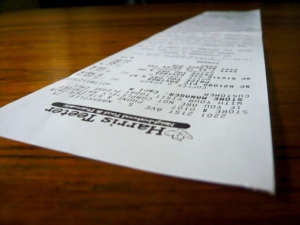 Is this happening at your favorite grocery store? You get 2 inches of cash register receipt attached to another 2 feet of special offers and other junk. I shop regularly at Harris Teeter, a regional chain with several outlets here in Muzak City, and their receipts are completely out of control. The receipt pictured here measures 18 inches in all – 3 inches of receipt – for a grand total of two items – and 15 inches of other stuff.
Is this happening at your favorite grocery store? You get 2 inches of cash register receipt attached to another 2 feet of special offers and other junk. I shop regularly at Harris Teeter, a regional chain with several outlets here in Muzak City, and their receipts are completely out of control. The receipt pictured here measures 18 inches in all – 3 inches of receipt – for a grand total of two items – and 15 inches of other stuff.
The other stuff includes the following: Special price offers on 16 different items, none of which I’m interested in, a $20 coupon offer for first time pharmacy customers, information about Harris Teeter’s charity donations, some legalese about what happens when you pay with a check, the customer service 800 number, and a plea to friend Harris Teeter on Facebook. None of which has anything whatsoever to do with documenting my purchase – the purpose of a receipt as I understand it.
So I get all this extra with my receipt, and as is so often the case, my mind is filed with questions.
Does anyone besides me get tired of standing there, waiting for all this to print out? I like to get my receipt and go. Does anyone besides me get annoyed trying to mash all this paper down into a grocery bag as you make for the door? Does anybody even read all this mess, much less haul ass back to the store to scoop up all these terrific bargains? Am I having to pay for all this extra paper via higher grocery prices?
And finally, of course, the proto-greenie in me asks, how many trees are we killing here?
Things aren’t quite this bad at the Kroger where I also shop, but there’s still a bunch of clutter on the receipt, so I assume this trend is current all across the nation. And that’s a lot of paper.
And it’s likely a lot of bemusement and annoyance, too. An (admittedly unscientific) survey of my friends and neighbors tells me that I’m not alone in my views on appropriate grocery store receipts.
So what does this have to do with marketing?
Well, it has something to do with creating a delightful overall customer experience – or not. It may sound like a little thing, but in the hyper-competitive grocery market, an annoying receipt may just push a customer out the door and into the arms of a competitor. There are all sorts of ways to distribute coupons and promote special offers, but only one shot at printing a receipt. So why make the receipt annoying? An annoyed customer is not your friend – or won’t be for long.
Harris Teeter, and to a lesser extent other chains, have been doing mega-receipts for quite a while, so someone somewhere at HQ must think it’s working for them. But I wonder if they know how many people find it off-putting? Off-putting enough to write a blog post about it. Why take the chance of losing one of these customers on the bet that someone will follow up on a special offer? Special offers are great. So is charitable giving and so is Facebook – I guess – but why honk someone off when you can promote all this stuff in a dozen other ways?
Cocktail Time
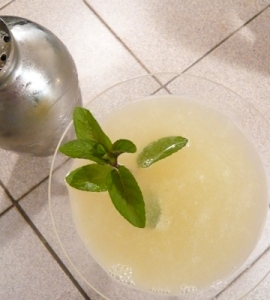 And about time it is – both for a cocktail and for spring to get here. So in hopes of ushering in some warmer weather, I present the first summer cooler of the year. It’s a lovely lime, ginger, minty drink that slides right down, so be careful. In honor of my friend Paula’s deluxe Tuesday porch parties, I call it Happy Tuesday. You’ll call it utterly delightful.
And about time it is – both for a cocktail and for spring to get here. So in hopes of ushering in some warmer weather, I present the first summer cooler of the year. It’s a lovely lime, ginger, minty drink that slides right down, so be careful. In honor of my friend Paula’s deluxe Tuesday porch parties, I call it Happy Tuesday. You’ll call it utterly delightful.
The ginger/mint part (see below) takes some doing to make, but it’s so worth it, and you can make a big batch ahead and put the gin into it as needed. And speaking of adding gin, you can do that in a big batch scenario as well to keep the party sipping without having to shake up a new round every 15 minutes. Plus adding a bit of water in place of the gin makes a perfectly acceptable non-alcoholic hot-weather guzzle.
So grab some ginger, some mint, and a bunch of limes. And start squeezin’!
Ginger/mint infusion
Add 5 or 6 tablespoons of grated fresh ginger (you can leave the skin on) and a half-cup of mint leaves to 2 cups of boiling water. Let it steep for 15 minutes, then strain and cool.
Happy Tuesday
- 2 parts ginger/mint infusion
- 1 part simple syrup
- 1 part fresh lime juice
- 2 parts gin
Shake with ice and serve straight up. And add a sprig of mint if you like.
Happy Tuesday (or any other day of the week) to all!
I stand amazed …
at all this amazingness.
Have you noticed? Everything’s amazing these days. It’s the superlative du jour. Or maybe the superlative du mois or de l’année. Whatever. It’s everywhere, and it’s bugging the fire out of me.
 I can’t scan a Facebook feed, or read a blog or a (favorable) restaurant review these days without running into someone’s amazing friends or amazing co-workers, an amazing presentation or party, or an amazing kumquat infused reduction.
I can’t scan a Facebook feed, or read a blog or a (favorable) restaurant review these days without running into someone’s amazing friends or amazing co-workers, an amazing presentation or party, or an amazing kumquat infused reduction.
By amazing, all these English abusers mean to say excellent. Well, that’s not what amazing means. Amazing means astonishing. Not excellent, nor astonishingly excellent. Just astonishing.
So … someone’s friends are astonishing. How so? Are they doing something so surprising or out of character that they astonish? Or something so good that they astonish? In which case are they generally doing things so pallid, mundane and/or morally neutral that anything out of the ordinary is astonishing?
Do you see my question here?
You say the presentation you saw was amazing/astonishing. How so? Astonishingly good, or astonishingly bad? Astonishingly informative? Did it use astonishingly complex PowerPoint builds? Who can tell? It’s just astonishing.
I could go on, but I think you see my point by this time. And I hope you’re not astonished by it.
And I have another point – something I’ve griped about before in Marketini. How could more-or-less everything be amazing? Are these people simply so naïve that everything they see astonishes them? Have they been living in a cave? Or, taking it the way the (mis)user intends the word – excellent – we could ask: If everything’s so excellent, what happens when something is better than the rest. Do we say even more amazing? Uber amazing? Amazingest? Where does this end? And what do we say when something is merely good? I have no idea. Everything these days is amazing.
Amazing marketing insights?
I have a few, but I doubt they are all that amazing.
One – it pays to say what you mean. Hyperbole is one thing, and I believe there’s a legitimate place for it. (God knows I use it often enough here in Marketini.) But outright misuse – amazing for excellent – is bad news. Words have meanings for a reason. They communicate specific concepts that we all buy into as speakers of English. If we misuse words, others are prone to misconstrue our meaning. And that can lead to all sorts of problems.
Say you’re advertising a lawn mower. Is it astonishing or excellent, or astonishingly excellent? I say you’d better be clear on that point if you plan to get people to buy into your advertising and buy a lot of lawn mowers.
And that gets to the second point – the overuse of superlatives. When everything is excellent, nothing is excellent. Your amazing lawnmower is no more amazing – or excellent, or whatever it is you mean – than the next amazing – or is it astonishing? – lawnmower. They’re all amazing. Which makes for a pretty dull world, not to mention desultory lawnmower shopping.
An amazing cocktail perhaps?
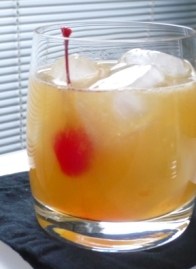 I can see my way clear to that scenario! With just the right combination of flavors and kick, a cocktail can indeed astonish. And leave you breathless.
I can see my way clear to that scenario! With just the right combination of flavors and kick, a cocktail can indeed astonish. And leave you breathless.
Let’s talk about the Whiskey Sour. It may not leave you breathless – like a Martini will – but it will leave your taste buds happy. And might astonish you with it’s sweet/sour sophistication – especially if you remember drinking those icky things made with powdered sour mix when you were a kid. I do. Yecch!
And the ease of preparation may amaze you too. It’s a simple 3, 2, 1 recipe.
Whiskey Sour
- Three parts whiskey. You can use bourbon, or rye (my favorite).
- Two parts lemon juice – it’s gotta be fresh folks.
- One part simple syrup.
Shake it with ice, pour into a rocks-filled rocks glass and garnish with a (stem-on, please) maraschino cherry.
Amazingly, astonishingly excellent!
Smart Board = Dumb Tech
 Recently, I volunteered to teach a class about branding at a local school. I figured I’d need to write things up on the wall during the post-Power-Point discussion period and I asked my hosts if the room contained a white board.
Recently, I volunteered to teach a class about branding at a local school. I figured I’d need to write things up on the wall during the post-Power-Point discussion period and I asked my hosts if the room contained a white board.
“Not only that,” came the proud reply. “It’s a smart board!”
Well.
In case you’re not familiar with this classroom/boardroom tech marvel, here’s the scoop. Like a white board, it’s white. And, like a white board, you write on it with “markers” in assorted colors, and erase with an “eraser.” But the – um cool? – thing about this is that it’s all electronic. Rather than writing on the surface with a marker, I skated over the surface with an electronic thingy that looked like a marker, and erased with a thingy that looked like a felt eraser.
And that’s where things got screwy. The “marker” didn’t write very well. It was much harder to make legible letters than with a real marker on a traditional board. And the “eraser” was slow. I like to go full steam ahead with an eraser – you should just see me! – and this one wouldn’t work if I went too fast. So I had to s-l-o-w down.
Plus – and this was a giant pain – each item had to be deposited back in its proper slot before you could use a different item. If an unused marker and/or the eraser wasn’t back in its proper slot, weird things – like stray lines, and incorrect colors – started to happen. So, no erasing while holding marker in your hand, or using two markers in rapid succession. All the picking up and putting down of things was really tedious.
Not only this, but something had gone awry and the tech guy had to come in and calibrate the danged thing before I could even use it.
Basically, this whole setup was much harder to use that a real white board. And GOK what it cost. Certainly more than a real white board and a couple of real markers.
So my question is this: why?
Isn’t tech supposed to make life easier and better. Goodness knows, life is annoying enough without a tech-imposed white board “solution” to make things even more annoying. For crying out loud!
So I asked the tech guy. Why? The only explanation he could come up with was that you could save what you wrote as a graphic file before you erased. But I can do this with a real white board by taking a picture with my phone. No doubt more easily.
So I repeat, why?
Is there a marketing lesson in this sad state of affairs?
Isn’t there always?
Beware of loading things up with bells and whistles of dubious value. This is a cousin to the New and Improved concept we ranted about last summer. In that case, new and improved frequently means neither. In this case there are improvements – or maybe we should say changes – that make the product new, but they aren’t really improvements. In fact, they make things worse. A sure path to an irritated customer.
In the case of smart boards, this doesn’t seem to be hurting sales – the danged things are popping up everywhere – but I’m wondering how many users would – and will if they can – go back to a traditional white board given the chance.
Is this a formula for lasting success in the marketplace? I think not. In the specific case of smart boards it may be too late. Smart boards aren’t easily replaced consumer products, like a tube of toothpaste or a flashlight, so long-suffering classroom teachers everywhere may be stuck with them for quite a while. But load up a less-durable product with improvements and features that do nothing, or worse, make things less good, and customers will vote – as they so often do – with their feet. Buh-bye.
Time for a belt
 And this time, just in time for Fat Tuesday, let’s go to New Orleans where things aren’t new and rarely need improvement. The bells and whistles are just fine as they are.
And this time, just in time for Fat Tuesday, let’s go to New Orleans where things aren’t new and rarely need improvement. The bells and whistles are just fine as they are.
Let’s have a round of Sazeracs.
Piquant is the word for these delights, but only if they’re made the right way. You have to start with rye whisky. Rye brings a spicy bump to the mix that bourbon and other American whiskies simply don’t have. Then you need a bit of Pernod Ricard or a similarly anise-flavored liqueur. And finally, bitters – they have to be Paychaud’s or it doesn’t work.
- ½ teaspoon of Pernod or substitute
- 2 ounces Rye
- ½ teaspoon simple syrup
- Dash of Peychaud’s bitters
- Lemon peel
Coat the inside of an on the rocks glass with the Pernod and discard any excess. Add the other ingredients and a few ice cubes and stir well. Twist the lemon peel over the glass and drop it in.
Sip a few of these and you’ll hear bells and whistles.
Life is too short for paper napkins
I mean really, what could be more absurd – fundamentally incorrect, actually – than a paper napkin?
 It’s not that I’m advocating walking around with left-over food on one’s face. We all need to wipe the old pie hole now and then – especially those of us, like me, who are hand-eye-coordination-challenged, and occasionally have trouble landing the fork or spoon in the target zone. For every plate of fried chicken I eat at Swett’s, I destroy at least three paper “napkins,” turning them into limp, greasy wads, so transparent you could read the phone book through them.
It’s not that I’m advocating walking around with left-over food on one’s face. We all need to wipe the old pie hole now and then – especially those of us, like me, who are hand-eye-coordination-challenged, and occasionally have trouble landing the fork or spoon in the target zone. For every plate of fried chicken I eat at Swett’s, I destroy at least three paper “napkins,” turning them into limp, greasy wads, so transparent you could read the phone book through them.
What I am advocating is a civilized return to wiping one’s mug with cloth. It’s amazing the excuses people come up with to justify this habit of using a piece of paper to tidy-up one’s face. Cloth napkins are expensive! You have to wash and iron them! I have small children! All of this whining is utter BS.
Too expensive? Nonsense! Even if you use the ultra-cheap kind – the kind that shred at the first hint of a face/food challenge – you’ll go through enough of these suckers in a few months to buy real napkins. I’ve done the math. Even using the rock-bottom cheapies from Kroger, in 8 months, you could pay for a nice set of 6 classic all-cotton, 21” square, white napkins retailing for $4.99 a piece at Crate and Barrel.
Washing and ironing? A totally bogus argument. Assuming you do laundry occasionally (I certainly do) you can simply toss them in with your t-shirts and tighty-whities. And guess what? They come out clean! A washday miracle! As for ironing, I have timed myself with my iPhone (which includes a stopwatch among its many deluxe features). I can iron one of these beauties in 31 seconds flat. Even doubling that time to allow for reaching – very slowly – into the laundry pile to get another one, you can iron 12 napkins in 12.4 minutes.
You say you have small children? So what? So did I at one time. I used nothing but cloth the entire time the little hellions were growing up. Probably saved a couple of thousand bucks in the process. Do you plan for your little ones to become civilized at some point in the future? Cloth napkins!
Ten legitimate excuses for using paper napkins:
1. You own and operate a diner.
2. Ummmm – there aren’t any others.
I rest my case.
So what does this have to do with marketing?
It has to do with economy in the true sense – spending your money wisely. In marketing, as in the rest of life, spending a little more for quality on the front end pays you back in the long run. I’ve had this happen about a million times: the client says, “I’d love to execute the whole marketing plan, but things are a little tight, so we think we’ll spend about half that and see what happens. What can you cut out?” The cuts are made and what usually happens is … not much. The diminished budget doesn’t allow for the needed punch, and the money that is spent accomplishes … not much. It’s the paper napkin approach to marketing. “We know these napkins aren’t as good, but we’ll use them anyway because they’re so cheap.” Penny wise, pound foolish.
And on to cocktails
As long as I’m promoting classic white dinner napkins, I might as well promote an all-time classic cocktail – the Daiquiri.
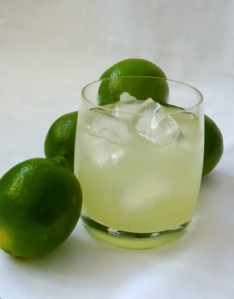 This rum and lime delight comes from Cuba, where rum and limes, not to mention sugar, are plentiful. The Daiquiri dates back to the 19th century, and it’s been enjoyed by the famous – Ernest Hemmingway and JFK were big fans – and the common folk as well, since the early years of the 20th.
This rum and lime delight comes from Cuba, where rum and limes, not to mention sugar, are plentiful. The Daiquiri dates back to the 19th century, and it’s been enjoyed by the famous – Ernest Hemmingway and JFK were big fans – and the common folk as well, since the early years of the 20th.
It has also been abused by college students and low-rent bartenders who – as with the Margarita – somehow want a Daiquiri to be a slushy, semi-frozen mess made in a blender or an Icee machine. To add insult to injury, they sometimes put icky-sweet things like strawberries into the mix as well.
Forget all this nonsense. Mix up a proper Daiquiri and you won’t be disappointed.
Originally the Daiquiri was served on ice – the way I like them – but they are also served straight up. Try it both ways.
Daiquiri
- 2 parts light rum – like Bacardi
- 1 part lime juice – and you know by now, it has to be fresh
- 1 part simple syrup
Simplicity itself. And sooo delicious.
Slo-mo? No go!
Okay, sports fans, it has come to this: I have absolutely had it with heart warming slo-mo.
I’ve been watching the Olympics – not 24/7, just here and there – and slo-mo is completely out of control. I’m not talking about slo-mo repeats of exciting action or disputed calls from the referee. That stuff is great. Love it!
I’m talking about the goopy stuff, calculated to put a lump in your throat. If NBC’s puff pieces on the athletes weren’t enough, the advertisers are simply relentless. It’s like there’s a requirement for 2.5 slo-mo events – usually including some sort of hug – per ad. And it’s putting a knot in my stomach as opposed to the desired lump in my throat.
You know what I’m talking about – all the soft-focus glop about striving to be the best, to overcome obstacles, to go the distance. Sometimes these are true (or true-ish) stories, sometimes, totally fictional. Sometimes they feature scenes of athletic prowess, sometimes it’s hugs from mom. Sometimes it’s the thrill of victory, sometimes it’s the agony of defeat. But it all comes packaged with slo-mo. The music swells as the slo-mo rolls, and we are supposed to be inspired – either to overcome our obstacles and become Olympic athletes (fat chance), or overcome our obstacles and go out and buy something.
Come to think of it, I’ve about had it with overcoming obstacles, too. Straining sinews – if not credibility – to overcome all, and get to the Olympics makes me tired just thinking about it, even without all this slo-mo crap.
Wonder what totally fed-up looks like in slo-mo?
And the marketing angle?
This is one we’ve talked about before – when everything is special, nothing is special. When everything is in slo-mo, slo-mo becomes the new normal and nothing stands out. When everything is heart warming and inspiring, it all becomes the same, and nothing warms the heart or inspires. In fact – in my case at least – quite the opposite.
So, in marketing one would do well to take it easy on the big claims. It’s like car dealer ads. When everything is on sale, nothing is on sale. It’s all just the same, nothing stands out and there’s no particular reason to go to one dealer over another.
And then there’s this: where there’s too much attempted warming of the heart, cynicism lies just around the corner. I’m as sentimental as the next person (I swear this is true, I just try not to let it show) and my heart can be warmed fairly easily. But with this type of constant barrage, my warm-heart receptors shut down, and I go to cynic mode in short order.
A cynical customer is not what most marketers are looking for. So, I’d advise you to back off on attempts to manipulate emotions. A little of that goes a very long way.
On to the sincerity of cocktails
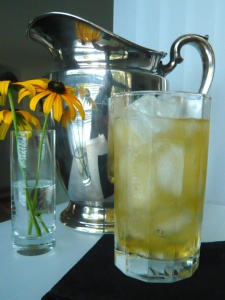 I’ve got a good one here that’s not the same old thing, and it will warm your heart – or warm something anyway. I adapted it from another much more complicated recipe based on scotch.
I’ve got a good one here that’s not the same old thing, and it will warm your heart – or warm something anyway. I adapted it from another much more complicated recipe based on scotch.
Scotch is not a typical cocktail base and that’s a big part of why this one is different. It has a large, rather complex sweet-tart flavor. It also has one more ingredient than I prefer, but it’s worth the trouble. I am dead certain you’ll love it.
I named it in honor of Dolores Palma, my good friend and occasional (occasional only because we live several states apart) drinking buddy who happens to love them. Mix up a few of these and it’s likely that the slo-mo overload will bother you somewhat less.
Dolores
- 2 parts scotch
- 2 parts Domaine de Canton Ginger Liqueur (We used this before in the Nifty Fifty and the Act III. Yummy!)
- .75 part fresh squeezed lime juice
- .5 part apricot brandy or peach schnapps
New and Improved
Really? Both?
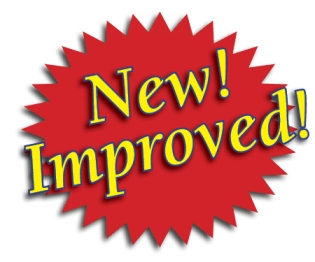 I’ve seen this odd conceptual confluence all my life – especially in the grocery store and in the aisles of other mass merchandisers where household products line the shelves and/or hang on pegs – and it makes me crazy.
I’ve seen this odd conceptual confluence all my life – especially in the grocery store and in the aisles of other mass merchandisers where household products line the shelves and/or hang on pegs – and it makes me crazy.
I’m not trying to be difficult here. I’ve got a serious question. How can something be both new and improved at the same time?
In the case of a product or service – or a thing designated by a noun of any type – new is a pretty absolute term. Granted, it’s not absolutely absolute. Things can be considered new over a short window of time, but new means not old. As in, it doesn’t have much of a past.
So, if improved means better than it used to be, how can something be improved if it didn’t used to be? It’s better than it used to be even though it didn’t exist before? Come now!
Of course we all know all these new and improved products aren’t really new. It may or may not be improved – caveat emptor – but if some marketing whiz at, say, Proctor & Gamble has slapped a New and Improved label on the package, the product been around long enough to be considered old and in need of improvement.
It’s possible there’s nothing new or improved about the product whatsoever – besides the package.
All of which brings me to this: the New and Improved designation, besides being conceptually bankrupt, is more-or-less meaningless. And yet product purveyors keep on keeping on. As I write this, there are probably 15 products at the my local Kroger that are labeled new and improved despite quite possibly being neither.
Like I said above, this makes me crazy. And of course there’s nothing you or I can do about it – other that bitch and moan – so thanks as always for letting me share.
Marketing points?
Oh yes! Two.
As consumers, we get what we ask for. We live in a culture that’s obsessed by newness and improvement. New products, new styles, new flavors. And if things aren’t exactly new, they simply have to be improved. Continuous improvement! That’s our mantra.
So that’s what we get at the grocery store and elsewhere. We demand it.
But at core we also know it’s a little white lie at best. All these new and improved products aren’t really new. We’ve been buying them for years. And as for improvements? Wellll, maybe. But who doesn’t take that with a grain of salt.
So in essence we are demanding to be lied to. Pretty idiotic isn’t it?
And here’s the other point. In commerce, you fail to meet your customers’ demands at your peril. Which makes liars out of advertisers. Even if you are an absolute saint and live the Boy Scout oath every day of your life, if you don’t offer your customers something new and improved now and again, you will likely lose some of them. So, you lie a little.
People want it, expect it, and buy by it.
Not pretty, but it keeps the wheels turning.
On to cocktails!
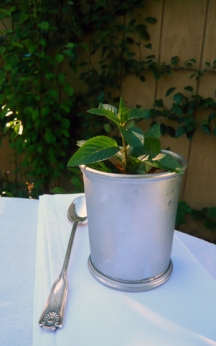 And this time we have one that isn’t new and needs no improvement whatsoever. The Mint Julep.
And this time we have one that isn’t new and needs no improvement whatsoever. The Mint Julep.
As with most old cocktails, the history of the Mint Julep is lost in the mists of time, but most sources have the original idea going back to the late 18th or early 19th century and using brandy (a worthwhile variation you ought to try). The traditional bourbon- based Julep was being served at the Kentucky Derby around 1875, and became the official drink of the Derby in the 1930s.
And, as always, does any of this really matter? Not when there’s a drink to be made and served to the parched. So let’s get to it.
A couple of things up front. You have to use bourbon whisky. This is a requirement. Don’t worry about why, just do it. You have to used crushed or finely cracked ice. This causes more ice to melt than with cubes, and the melted ice is a flavor influencing ingredient of the drink. My recipe calls for simple syrup because it mixes so easily. Others call for sugar and water and you can go that way if you wish. It’s just a lot more trouble.
Now, on to the drinks.
Mint Julep
- 3 or 4 ounces bourbon
- 1 tbsp simple syrup
- 6-8 fresh mint leaves (plus a sprig for garnish)
Muddle – mash and break, don’t pulverize – the mint leaves in the simple syrup at the bottom of a silver julep cup or any vessel taller than it is wide. (If you pulverize the leaves, you’ll get unsightly mint leaf fragments stuck in your teeth.) (If you don’t have a muddler use the back side of a tablespoon. A screwdriver handle works well, too.)
Fill the cup with crushed ice, pour in the bourbon, stir a bit and sip, sip, sip. You’ll feel like a Kentucky Colonel in no time at all.
Sit Back, Relax …
and suspend all sense of disbelief.
I don’t know about you, but as I have grown older – and perhaps a tiny bit wiser – what passes for reality looks less and less real. Now and then, for reasons that aren’t always clear, some little commonplace occurrence suddenly brings this scary state of affairs to my view in bold relief. It happened on a recent Delta Airlines flight – like a hammer clanging on an anvil.
I’m referring here to the little speech you almost always get from the captain just as the plane gets into the air. Along with all sorts of travel trivia – altitude, air speed and the like – and some useful information – like the ETA – we are encouraged to sit back, relax and enjoy the flight.
I beg your pardon? Do what?
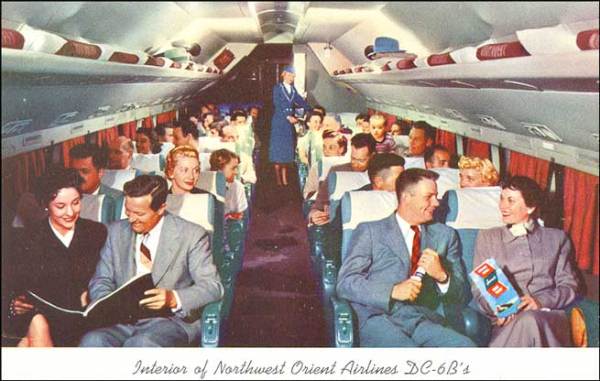 I’ve just paid twenty-five bucks to check a bag and avoid the shove-it-in-the-overhead-bin slug fest, and I’m sitting there on a totally full flight, crammed – and I’m not all that wide – into a seat that “reclines” all of 1.5 inches, next to a guy with really big arms and ear buds leaking rock music into my personal space. And I’m asked to sit back – How?– relax –Really?– and enjoy the flight. This is a joke, right?
I’ve just paid twenty-five bucks to check a bag and avoid the shove-it-in-the-overhead-bin slug fest, and I’m sitting there on a totally full flight, crammed – and I’m not all that wide – into a seat that “reclines” all of 1.5 inches, next to a guy with really big arms and ear buds leaking rock music into my personal space. And I’m asked to sit back – How?– relax –Really?– and enjoy the flight. This is a joke, right?
Obviously, this perky suggestion became standard pilot procedure back when air travel was glamorous. Before the airliner became the Greyhound bus of the air – faster, yes, but not as clean or comfortable. Back when ladies (remember that term?) wore hats, seats on planes were wide enough to accommodate a normal person and Eisenhower – or was it William Howard Taft? – was president.
And here we are, in the 21st century, still getting this totally bogus suggestion from a person presumably intelligent enough to pilot a gigantic aircraft. You’d think they’d simply have the smarts and/or good taste not to bring it up.
But wait – there’s more! And it’s a little uncomfortable to contemplate. While it’s fun to bitch about the indignities of air travel – like bitching about the decline of English as we did in March of last year – the plain truth is this: We’ve done it to ourselves.
It’s the magic of the marketplace, folks. We keep on demanding cheaper and cheaper air fare, and we keep on getting it – to the point where most of the airlines are operating in the red and the travel experience has been reduced to something that contravenes the Geneva Convention. And let’s not even start on security lines, body scans or baggage claim.
So here we go … through the looking glass. Air fare is cheaper than ever, so we fly more than ever. But experience is worse than ever, so we complain more than ever. And, for old times sake, the captain comes on the PA and bids us sit back, relax and enjoy it.
It’s like taking drugs. Only not as safe or as much fun.
What does this have to do with marketing?
As usual, I’m so glad you asked.
What I see here is a bad case of cognitive dissonance. A brand completely detached from reality. Air travel has been Walmart-ized but the air travel brand got stuck years ago at “glamorous.”
Walmart, in a relentless drive to provide cheap everything, has reduced the shopping experience to a dismal, occasionally nightmarish, foray into an aircraft-hangar-sized building full of stuff. Plus, you sometimes get to rub shoulders with truly scary fellow shoppers. (Have a look at http://www.peopleofwalmart.com if you want scary.)
No one at Walmart is chipper. No one at Walmart is cute. No one at Walmart can help you. No one at Walmart cares that you are alive. Just like air travel. And yet most people don’t complain about shopping at Walmart. True, there have been tons of complaints about sleazy business practices like the abuse of employees, but that’s another issue. I’m talking about the shopping experience. Some people actually seem to like it.
It has to do with expectations of the brand. What does Walmart advertise? Price. Period. Nothing about nice stores, nothing about good service, nothing about glamour or style. In fact they recently tried to imitate Target and go stylish – and it bombed. The Walmart brand is “low prices.”
The problem with air travel is our lingering expectations – fostered by the carriers themselves – of the brand. They want you to think the experience is going to be acceptable. Look at their marketing – full of smiling faces, glamour shots of planes against the sunset, evocative photographs of lush destinations, gorgeous business class flight attendants. Never mind all that – you’ll actually be flying in a cattle car with wings.
Ironically, but tellingly, people love Southwest, one air carrier that sells mostly on price. Never mind that squeezing into a Southwest seat is every bit as physically uncomfortable as on Delta or American. Or that you have to line up in the terminal as if you were in third grade waiting to go to recess. Or that if you manage to get an aisle seat you have to sit and wait nervously, hoping someone really unpleasant doesn’t sit in the middle seat next to you – which always happens. None of that matters to most folks because they feel like they got a great deal. They weren’t expecting a nice experience. They got a low price. So anything beyond that is gravy.
So what’s our lesson here? Get your brand in line with reality. Or get reality in line with your brand. Either way, but brand and reality had better match up. If not, God help you! Would you want to be heading up Delta Airlines at the moment?
Neither would I.
On to cocktails!
And I’m not talking about those cheesy little airline bottles, either.
 With the blistering heat of summer upon us, let’s go to tall and cool this time, and shake up a classic Mai Tai.
With the blistering heat of summer upon us, let’s go to tall and cool this time, and shake up a classic Mai Tai.
The mythology on this one has the original Trader Vic, whipping up the first Mai Tai in the 1940s at a Bay Area spot called Hinky Dink’s before he opened the eponymous Trader Vic’s. Sounds plausible to me, but really, when you’re hot and tired, who cares where it came from, and why worry about finding a paper parasol. Just shake it up and drink it.
Irrespective of it’s provenance, it’s a tall, cool concoction that’s easy – maybe too easy – to drink. Enjoy but watch out.
One caveat is this. You’ll need orgeat (pronounced OR-git) which is an almond syrup and it can be tough to find on a retail store shelf. Fortunately www.kegworks.com has all the Fee Brothers bitters and other flavorings (among all sorts of other great cocktail-related stuff), and they’ll be glad to sell you some Fee Brothers orgeat.
You’ll also find recipes that vary quite a bit from the one below. Many of them call for half light rum and half dark rum. I like to us all light because it makes a less heavy drink, good for hot weather. But it never hurts to experiment. So have at it.
Mai Tai
- 3 oz. light rum
- half oz lime juice
- dash triple sec
- dash of orgeat
- dash of simple syrup
(A dash is 6-8 drops, a healthy squirt)
You know my take on garnish, but you have my permission to go wild on this – limes, mint, melon cubes and of course a parasol. Whatever looks festive and tasty.
